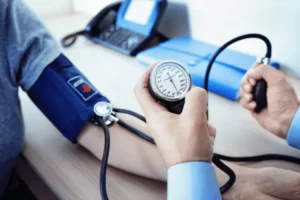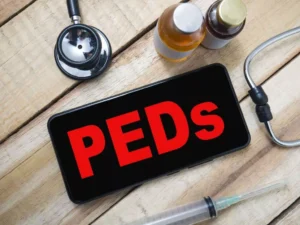Understanding Your Risk for Cannabis Use Disorder Cannabis and Public Health

Remember, knowledge is power, and understanding is the first step towards change. The more we talk about weed addiction, the more we chip away at the stigma and misconceptions surrounding it. Share your stories, listen to others, and remember – you’re not alone in this journey.

Marijuana (Cannabis, Weed)
Researchers have identified several gene variants that can increase the risk of developing cannabis dependence or cannabis addiction. There are currently no FDA-approved medications for the treatment of marijuana use disorders, but research in this area is ongoing. Clinical trials have shown that buspirone, an anti-anxiety medication, can reduce cravings and drug use and decrease symptoms of irritability. Cannabis use disorder is more likely to develop in individuals who began smoking weed at a younger age or use the drug heavily. The National Institute on Drug Abuse (NIDA) suggests that around 30% of people who use marijuana have a cannabis use disorder. While marijuana (also known as weed) is sometimes portrayed as relatively harmless, research has shown that it can have a number of negative effects on health.

action: ‘healthbeat’
More than 1 in 10 drinkers say they have used marijuana in the past year. Combining alcohol and marijuana at the same time roughly doubled the odds of drunk driving or legal, professional, or personal problems, compared to marijuana addiction drinking alone. But that can jump to 70 to 120 beats or more per minute for 3 hours after the effects kick in. The added strain plus tar and other chemicals in pot may raise your chance of having a heart attack or stroke.
Prepare for Withdrawal When You Stop Marijuana
- Along with having trouble breathing, you might feel like you’re having an asthma attack or have less oxygen in your lungs.
- CM uses operant conditioning with a target behavior; this means that the desired behavior is rewarded and reinforced to increase the likelihood of it occurring again.
- Long-term users who try to quit report withdrawal symptoms such as irritability, sleeplessness, decreased appetite, anxiety and drug craving–all of which can make it difficult to abstain.
- NAC helps regulate the intra- and extracellular levels of glutamate through the cysteine-glutamate antiporter.
This risk could be higher in young men or people assigned male at birth, especially those 16 to 25 years of age. Using marijuana may raise your chances of clinical depression or worsen the symptoms of any mental disorders you already have. If you vape or smoke weed, the THC could get into your bloodstream quickly enough for you to get your high in seconds or minutes. The THC level usually peaks in about 30 minutes, and its effects may wear off in 1-3 hours.
Terms of Service apply.

Marijuana can be used in a variety of ways and for many reasons. More research about the short-term and long-term effects of marijuana is needed. If you think you may https://ecosoberhouse.com/ be addicted to marijuana, talk to your doctor about your symptoms. Treatment works best when conditions that may be linked to marijuana use are discovered early.
- One small study published in the journal PLoS ONE found that moderate exercise curbed marijuana use and cravings.
- The popularity of edibles also increases the chance of harmful reactions.
- Read on to learn more about marijuana, its effects, addictive potential, and type of treatment for those who struggle with its misuse.
- Synthetic cannabinoids, compounds manufactured to replicate individual chemicals found in cannabis, are much more potent than cannabis and therefore could be more dangerous.
- It’s like a mental gym workout, helping you build the muscles you need to resist cravings and develop healthier coping mechanisms.
Another myth is that weed is harmless because it’s not as addictive as other drugs. This is like saying it’s okay to jump off a one-story building because it’s not as dangerous as jumping off a skyscraper. Just because something isn’t the worst doesn’t mean it’s good for you. And suddenly, that “harmless plant” doesn’t seem so harmless anymore. Marijuana smoke contains many of the same harmful components as tobacco smoke.

Research suggests that up to 90% of people who are dependent on marijuana will experience withdrawal symptoms. People who use tobacco or other substances are more likely to experience withdrawal when they stop smoking marijuana. In addition to its role in HPA axis dysfunction and reward processing, the hyperactivation of the eCS may also play a role in the executive dysfunction sometimes observed in cannabis use. The eCS is highly active in adolescent brain development, particularly in the PFC, a region that exercises executive function (Dow-Edwards and Silva 2017). Activation of presynaptic CB1 receptors inhibits glutamate transmission onto GABAergic cells in the PFC, reducing the function of inhibitory prefrontal circuits. Therefore, hyperactivation by exogenous cannabinoids during development could disrupt the maturation of GABAergic interneurons in the PFC and desynchronize PFC circuits (Caballero and Tseng 2012).
Your Brain May Be Impaired
They add that people who use marijuana before age 18 are 4 to 7 times more likely to develop this use disorder than adults. If you use these drugs more, you’re at risk for opioid use disorder. If you need surgery and use cannabis, make sure to tell your doctor about your use. Whether you use it recreationally or medically, it can affect how your anesthesia works. If your doctor is aware of your use, they’ll be able to take the steps to make sure you stay sedated, or “asleep,” for the entire surgery.
Staying Healthy
However, research is limited and the details of the negative effects on the brain are not fully understood. Addiction happens when a person uses a substance such as alcohol, marijuana, or another drug in excess. It is usually marked by a change in behavior, where the person becomes consistently focused on using that substance regardless of potential negative outcomes.
People who have cannabis use disorder may also be at a higher risk of other negative consequences, such as problems with attention, memory, and learning. The age at which a person begins using cannabis is another factor linked to the risk for addiction. People who start using cannabis before the age of 18 have a higher risk of becoming addicted. However, a positive drug test does not necessarily mean the person has cannabis use disorder and a negative drug test does not rule it out. Instead, it is more important to look at reported cannabis intake compared to the amount that is in the blood.
